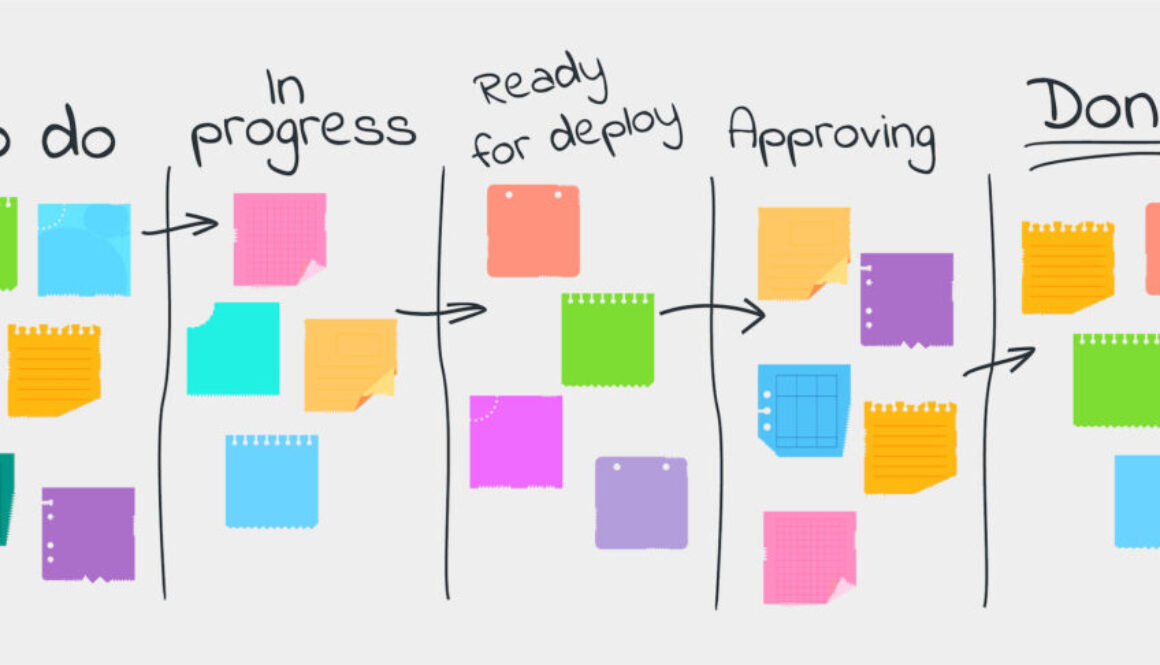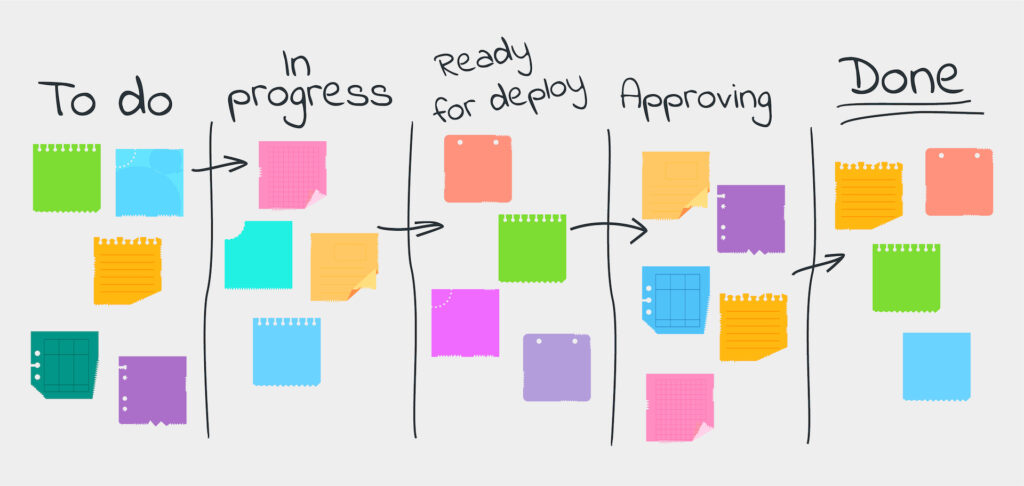 “Team room” generally refers to a dedicated space where an entire team gathers. It differs from a standard meeting room in that it is dedicated to one team. Additionally, it is meant for collaborative work, not presentations.
“Team room” generally refers to a dedicated space where an entire team gathers. It differs from a standard meeting room in that it is dedicated to one team. Additionally, it is meant for collaborative work, not presentations.
In a colocated setting, this is a straightforward concept to understand, though, in practice, it tends to be more challenging to implement than one would expect. The benefits tend to become apparent quickly. A team communicates more effectively, and decisions are made more quickly. Outside partners find the team easier to work with as they are all in one place.
This is great as long as two things are true. First, the organization has to be willing to invest the money and time in setting up the workspace, including a short time of lowered productivity as the team settles in and makes it their own. Second, the team has to be colocated.
At the risk of dating this post, not many teams are colocated in 2020. That said, I suspect a large amount of distribution will continue even after the world moves past the current situation. On the surface, it appears the team room may be dead just as it started to gain acceptance. That begs the question, what exactly is a team room?
According to the definition found at Agile Alliance, it is a dedicated space for the entire team – not just developers – set aside from other groups and allocated for the entire project duration. It goes on to not only affirm the space is furnished with things the team may need but goes into details on what that might entail, such as whiteboards and workstations.
It is important to note that a corner of an open office is not an acceptable team room. While it may be a dedicated space, it is not set aside from other groups. The encroachment on the team of outside white noise alone would be detrimental to the benefits.
The biggest benefit is communication, with team member satisfaction along for the ride. How this benefit is achieved is through what Alistair Cockburn called “Osmotic Communication.” Basically, communication through osmosis. By being near team members, people can overhear things without trying to listen in. Being isolated from others means the team members aren’t overwhelmed with irrelevant noise. Not only are people able to chime in with no friction, allowing for a better full picture during discussions, but they are able to rapidly come to group decisions due to lowered communication barriers.
Is it possible to have a “dedicated space” for an entire team that is “set aside from others” in the organization without a physical place? How about furnishing this space with “tools and amenities the team may need” when there isn’t a physical place to set them up?
In my experimentation with open Zoom rooms, yes.
It doesn’t need to be Zoom, though it is the one I have the most experience with I am not an affiliate. The formula is pretty simple and can be implemented via other similar conferencing solutions. Here are your minimum requirements based on my testing.
- Persistent video-enabled space
- A physical location is “video-enabled.”
- Shared workboard
- Preferably persistent even when nobody is using it.
- Easy screen sharing
- Ability to temporarily invite others
- Inability for others to drop in unexpectedly
- Available 24/7
Some nice to haves include:
- Full duplex audio
- Built in file transfer
- Break-out rooms
I will grant that even with this in place it can be difficult to work the same way in a distributed team room one would in a physical team room. Of course, it is also more difficult to work the same way in an open office as it is in a building of individual offices, or in a high-wall cubicle space versus a low-wall one, or in pods versus individual cubicles. Each type of workspace has its own difficulties, and all of them can be overcome as a team grows together.
Back to the question at hand then, what is a team room? Aside from the suggested furnishings, I think Agile Alliance has it pretty well defined. It is a dedicated space for the team where they gather and do their work. It is separate from other groups, and they are able to configure it to best suit their needs.
The other question, has the team room died before gaining mainstream success? I think not. In fact, I can see distributed teams pushing the concept of the team room to the forefront as the organization’s cost to support it is smaller in a virtual space than a physical one.
If you have teams trying to figure out how to become distributed, or even just trying to improve in their agile journey, call me. We’ll talk about where the organization needs them, where they are, and some initial steps to get them moving the right direction.
 It happens to every team. The sprint is coming to an end and the team has nothing to demo. Is it because no progress was actually made? Unlikely. Usually, it’s because the progress isn’t something that can be easily shown. In this situation, most teams want to skip the demo. You can’t blame them really. The team is likely embarrassed and almost certainly frustrated. They worked hard but don’t feel as if they have anything to show for it.
It happens to every team. The sprint is coming to an end and the team has nothing to demo. Is it because no progress was actually made? Unlikely. Usually, it’s because the progress isn’t something that can be easily shown. In this situation, most teams want to skip the demo. You can’t blame them really. The team is likely embarrassed and almost certainly frustrated. They worked hard but don’t feel as if they have anything to show for it.



















